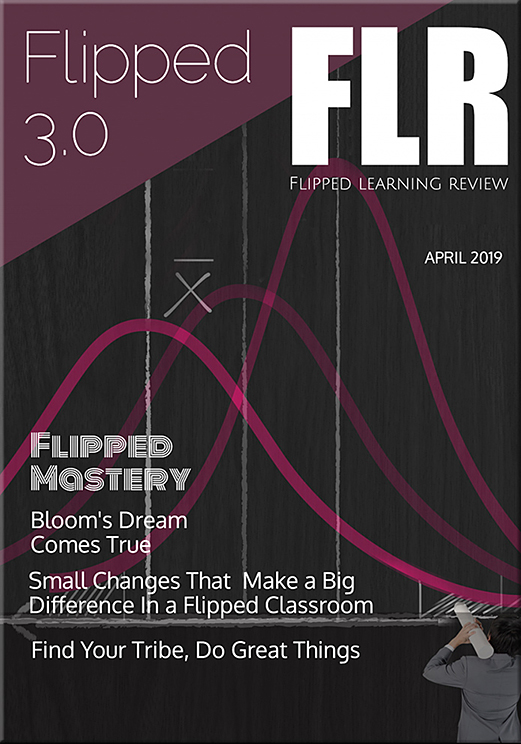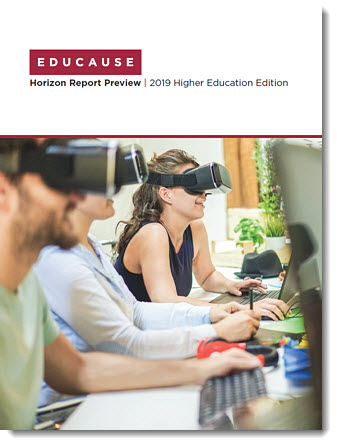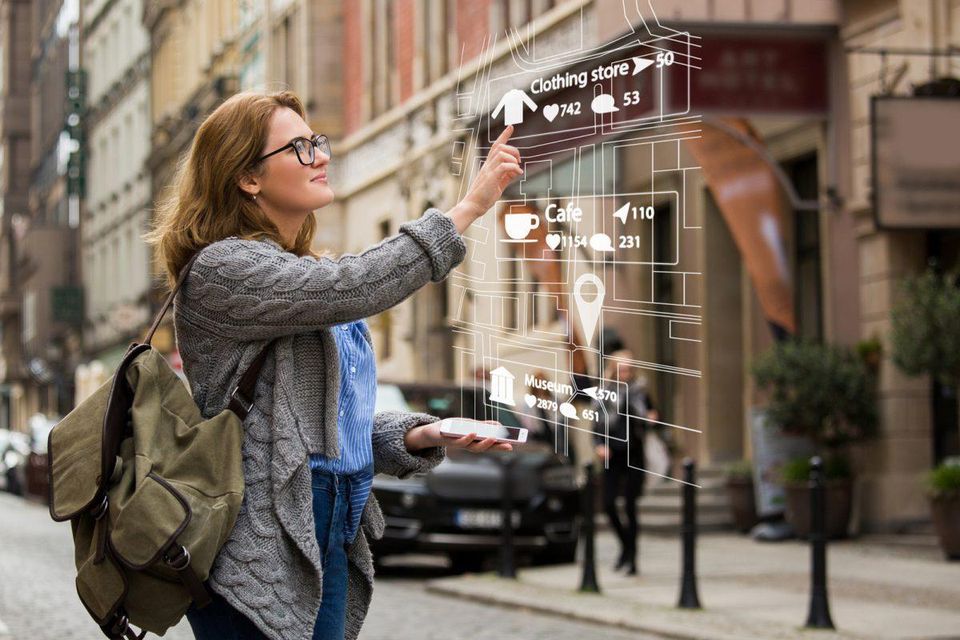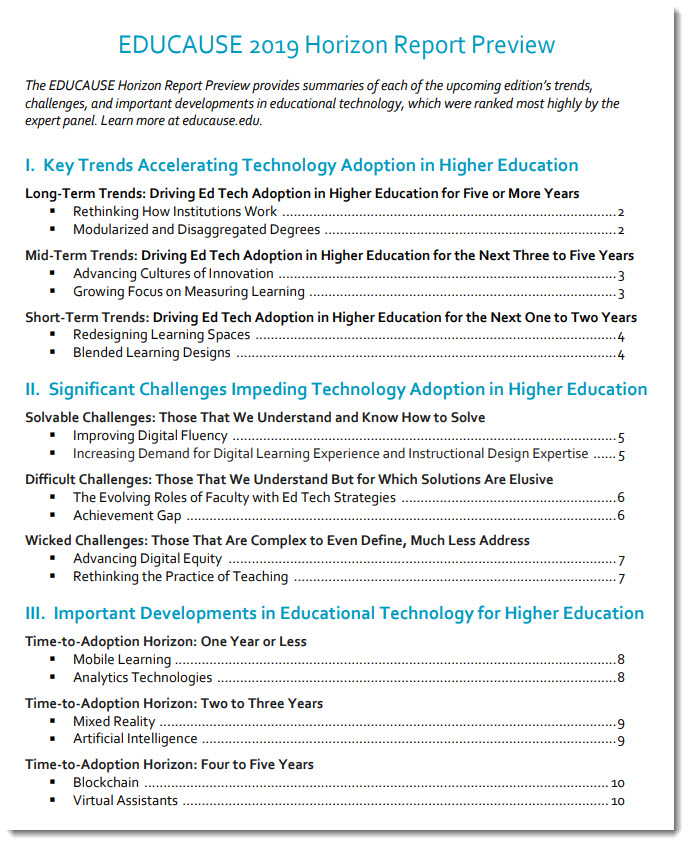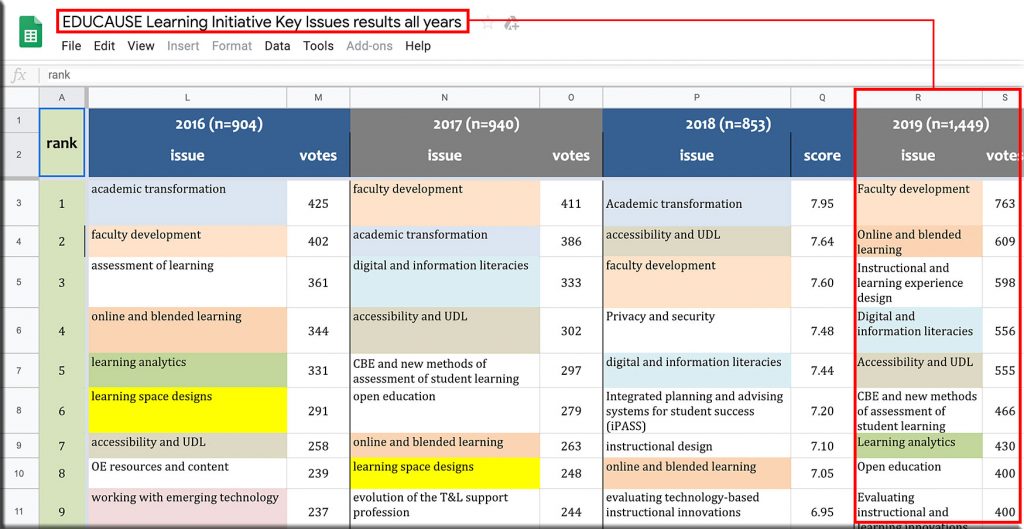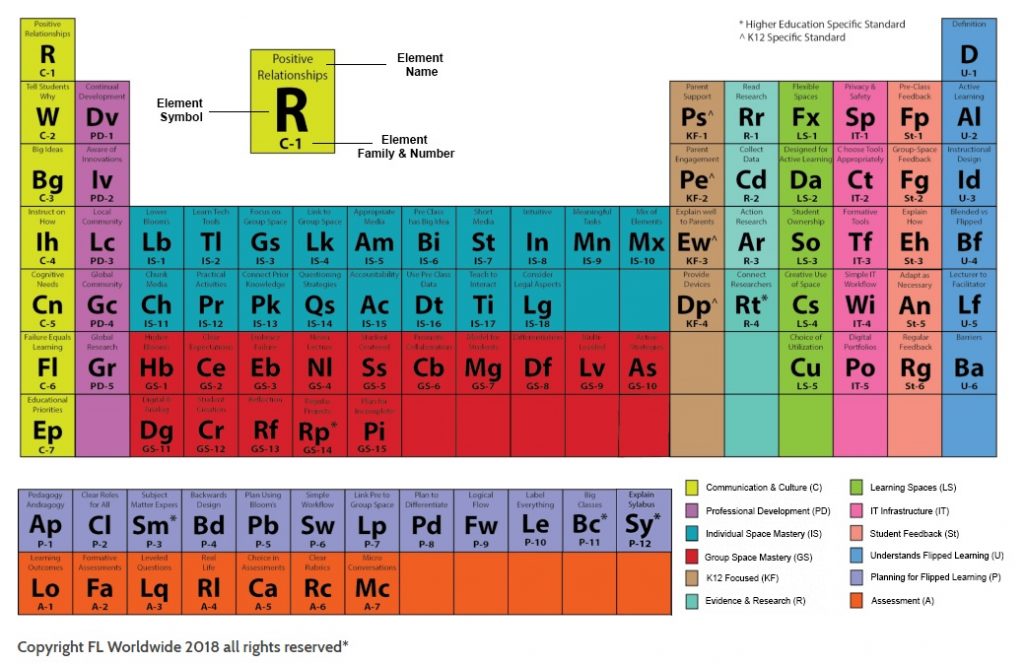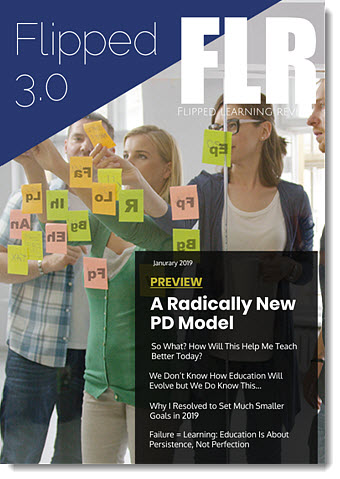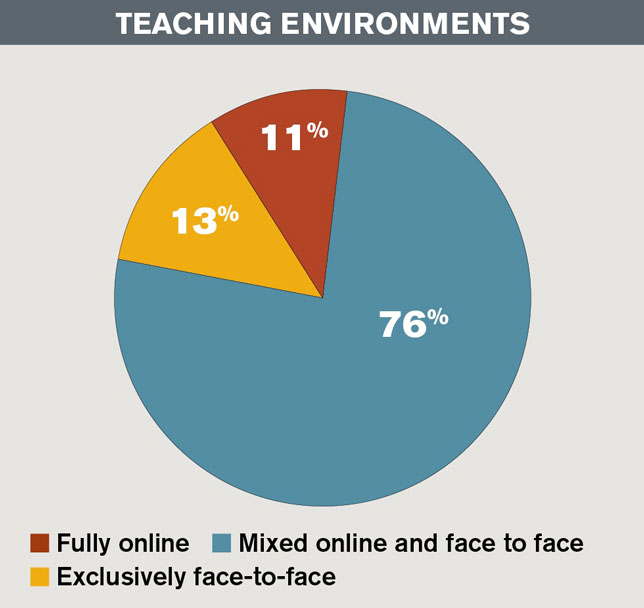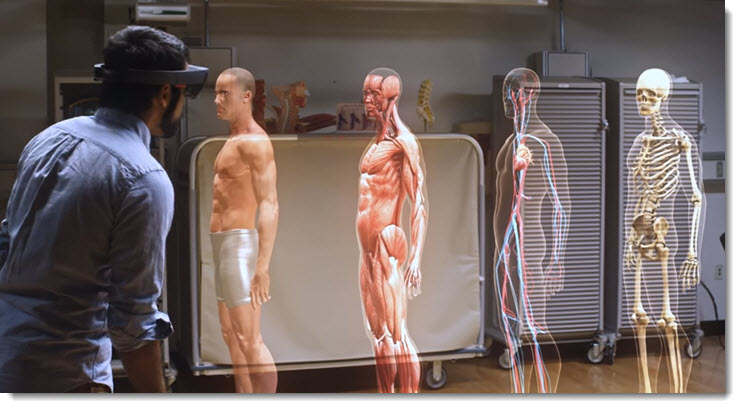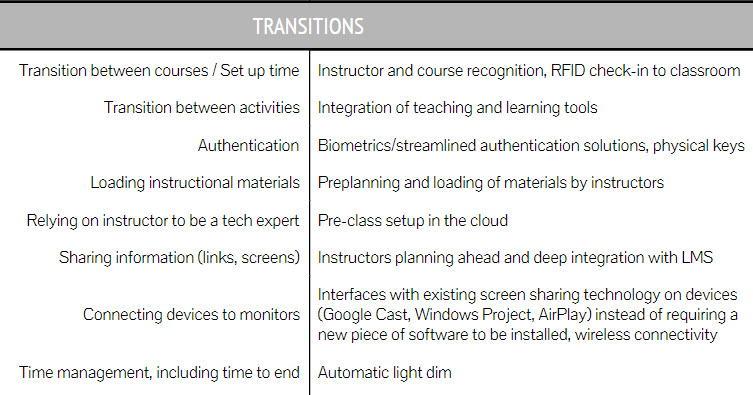A growing repository of useful design tools, from accessibility and AR to wireframing and 3D modeling software.
? Awesome Design Toolshttps://t.co/qo5wAU9D4d pic.twitter.com/THIYPLmH0c
— Smashing Magazine (@smashingmag) April 10, 2019
The finalized 2019 Horizon Report Higher Education Edition (from library.educause.edu) was just released on 4/23/19.
Excerpt:
Key Trends Accelerating Technology Adoption in Higher Education:
Short-Term—Driving technology adoption in higher education for the next one to two years
- Redesigning Learning Spaces
- Blended Learning Designs
Mid-Term—Driving technology adoption in higher education for the next three to five years
- Advancing Cultures of Innovation
- Growing Focus on Measuring Learning
Long-Term—Driving technology adoption in higher education for five or more years
- Rethinking How Institutions Work
- Modularized and Disaggregated Degrees
From DSC:
First of all, an article:
The four definitive use cases for AR and VR in retail — from forbes.com by Nikki Baird
Excerpt (emphasis DSC):
AR is the go-to engagement method of choice when it comes to product and category exploration. A label on a product on a shelf can only do so much to convey product and brand information, vs. AR, which can easily tap into a wealth of digital information online and bring it to life as an overlay on a product or on the label itself.
From DSC:
Applying this concept to the academic world…what might this mean for a student in a chemistry class who has a mobile device and/or a pair of smart goggles on and is working with an Erlenmeyer flask? A burette? A Bunsen burner?
Along these lines...what if all of those confused students — like *I* was struggling through chem lab — could see how an experiment was *supposed to be done!?*
That is, if there’s only 30 minutes of lab time left, the professor or TA could “flip a switch” to turn on the AR cloud within the laboratory space to allow those struggling students to see how to do their experiment.
I can’t tell you how many times I was just trying to get through the lab — not knowing what I was doing, and getting zero help from any professor or TA. I hardly learned a thing that stuck with me…except the names of a few devices and the abbreviations of a few chemicals. For the most part, it was a waste of money. How many students experience this as well and feel like I did?
Will the terms “blended learning” and/or “hybrid learning” take on whole new dimensions with the onset of AR, MR, and VR-related learning experiences?
#IntelligentTutoring #IntelligentSystems #LearningExperiences
#AR #VR #MR #XR #ARCloud #AssistiveTechnologies
#Chemistry #BlendedLearning #HybridLearning #DigitalLearning
Also see:
- 100 million people will shop with AR by 2020, market researcher says — from cnet.com by Shelby Brown
5G is the key to it all, according to Gartner.
. - Advertising Enters the Next Dimension — from medium.com by Tom Emrich
7 ways spatial computing is evolving advertising & marketing
“It is conceivable that we’re going to be moving into a world without screens, a world where [glasses are] your screen. You don’t need any more form factor than [that].”
(AT&T CEO)
From a fairly recent e-newsletter from edsurge.com — though I don’t recall the exact date (emphasis DSC):
New England is home to some of the most famous universities in the world. But the region has also become ground zero for the demographic shifts that promise to disrupt higher education.
This week saw two developments that fit the narrative. On Monday, Southern Vermont College announced that it would shut its doors, becoming the latest small rural private college to do so. Later that same day, the University of Massachusetts said it would start a new online college aimed at a national audience, noting that it expects campus enrollments to erode as the number of traditional college-age students declines in the coming years.
“Make no mistake—this is an existential threat to entire sectors of higher education,” said UMass president Marty Meehan in announcing the online effort.
The approach seems to parallel the U.S. retail sector, where, as a New York Times piece outlines this week, stores like Target and WalMart have thrived by building online strategies aimed at competing with Amazon, while stores like Gap and Payless, which did little to move online, are closing stores. Of course, college is not like any other product or service, and plenty of campuses are touting the richness of the experience that students get by actually coming to a campus. And it’s not clear how many colleges can grow online to a scale that makes their investments pay off.
“It’s predicted that over the next several years, four to five major national players with strong regional footholds will be established. We intend to be one of them.”
University of Massachusetts President Marty Meehan
From DSC:
That last quote from UMass President Marty Meehan made me reflect upon the idea of having one or more enormous entities that will provide “higher education” in the future. I wonder if things will turn out to be that we’ll have more lifelong learning providers and platforms in the future — with the idea of a 60-year curriculum being an interesting idea that may come into fruition.
Long have I predicted that such an enormous entity would come to pass. Back in 2008, I named it the Forthcoming Walmart of Education. But then as the years went by, I got bumbed out on some things that Walmart was doing, and re-branded it the Forthcoming Amazon.com of Higher Education. We’ll see how long that updated title lasts — but you get the point. In fact, the point aligns very nicely with what futurist Thomas Frey has been predicting for years as well:
“I’ve been predicting that by 2030 the largest company on the internet is going to be an education-based company that we haven’t heard of yet,” Frey, the senior futurist at the DaVinci Institute think tank, tells Business Insider. (source)
I realize that education doesn’t always scale well…but I’m thinking that how people learn in the future may be different than how we did things in the past…communities of practice comes to mind…as does new forms of credentialing…as does cloud-based learner profiles…as does the need for highly efficient, cost-effective, and constant opportunities/means to reinvent oneself.
Also see:
- Fearing ‘existential threat,’ U of Massachusetts unveils plans for national online platform — from educationdive.com by Natalie Schwartz
Addendum:
74% of consumers go to Amazon when they’re ready to buy something. That should be keeping retailers up at night. — from cnbc.com
Key points (emphasis DSC)
- Amazon remains a looming threat for some of the biggest retailers in the country — like Walmart, Target and Macy’s.
- When consumers are ready to buy a specific product, nearly three-quarters of them, or 74 percent, are going straight to Amazon to do it, according to a new study by Feedvisor.
- By the end of this year, Amazon is expected to account for 52.4 percent of the e-commerce market in the U.S., up from 48 percent in 2018.
“In New England, there will be between 32,000 and 54,000 fewer college-aged students just seven years from now,” Meehan said. “That means colleges and universities will have too much capacity and not enough demand at a time when the economic model in higher education is already straining under its own weight.” (Marty Meehan at WBUR)
Horizon Report Preview 2019 — from library.educause.edu
Analytics, Artificial Intelligence (AI), Badges and Credentialing, Blended Learning, Blockchain, Digital Learning, Digital Literacy, Extended Reality (XR), Instructional Design, Instructional Technologies, Learning Analytics, Learning Space, Mobile Learning, Student Learning Support, Teaching and Learning
Abstract
The EDUCAUSE Horizon Report Preview provides summaries of each of the upcoming edition’s trends, challenges, and important developments in educational technology, which were ranked most highly by the expert panel. This year’s trends include modularized and disaggregated degrees, the advancing of digital equity, and blockchain.
For more than a decade, EDUCAUSE has partnered with the New Media Consortium (NMC) to publish the annual Horizon Report – Higher Education Edition. In 2018, EDUCAUSE acquired the rights to the NMC Horizon project.
Learning and Student Success: Presenting the Results of the 2019 Key Issues Survey — from er.educause.edu by Malcolm Brown
Excerpts:
Here are some results that caught (Malcolm’s) eye, with a few speculations tossed in:
- The issue of faculty development reclaimed the top spot.
- Academic transformation, previously a consistent top-three finisher, took a tumble in 2019 down to 10th.
- After falling to 16th last year, the issue of competency-based education and new methods of learning assessment jumped up to 6th for 2019.
- The issues of accessibility and universal design for learning (UDL) and of digital and information literacy held more or less steady.
- Online and blended learning has rebounded significantly.
Is Teaching an Art or a Science? New Book Takes a Fresh Look at ‘How Humans Learn.’ — from edsurge.com by Jeff Young
Excerpts:
Eyler: That is the perennial question. We actually wrote a post for our Teaching Center’s blog with that title, “Is teaching an art or a science?” It has by far been read more than any other blog post that we’ve written.
My answer might be a little unfulfilling because I think it’s actually both. I think there is a scientific element to teaching. The book is about understanding the science of how we learn, how learning has evolved over time, and the social interactions that shape teaching. And the best teachers also often approach teaching and teaching issues scientifically. They have a hypothesis of what they think will help students learn, and they’re going to test it out and then learn from it and revise.
But if we focus too much on the science, we lose the human element of teaching—what I think of as the art of teaching.
…
What’s the thing that surprised you most in your research or putting this book together?
Much of what surprised me most makes up a lot of the final chapter, which is on failure. As teachers, we don’t get trained to think of failure as a positive thing in any way, even though as researchers we know that failure is a part of the learning process. No one walks into a lab right away and comes up with the Nobel Prize-winning discovery. It’s an iterative cycle.
We have these educational systems that are set up to move in exactly the opposite way. We give students really high-stakes assignments and assessments with very few opportunities to do them.
The series as of today includes these videos/topics:
#1 Explain How – Global Elements of Effective Flipped Learning (2019)
#2 Microconversations – Global Elements of Effective Flipped Learning 2019
#3 Embracing Failure in Education – Global Elements of Effective Flipped Learning (2019)
#4 Choice of Utilization- Global Elements of Effective Flipped Learning (2019)
#5 Differentiation – Global Elements of Effective Flipped Learning (2019)
#6 Use Bloom’s Taxonomy to Plan – Global Elements of Effective Flipped Learning (2019)
#7 Barriers to Change – Global Elements of Effective Flipped Learning (2019)
#8 Chunk Media – Global Elements of Effective Flipped Learning (2019)
#9 Appropriate Media – Global Elements of Effective Flipped Learning 2019
#10 Big Ideas – Global Elements of Effective Flipped Learning (2019)
Addendum on 1/21/19:
Survey: Online, Blended Dominate Today’s Learning Environments — from campustechnology.com by Rhea Kelly
In our latest Teaching with Technology Survey, the vast majority of faculty members said they teach in either a fully online or blended format.
However, that doesn’t mean those instructors blend every course. When we asked faculty how many of their classes are blended, 29 percent said they teach all blended classes, while 45 percent blend some of their classes. Six percent said they plan to use the blended model in the next year or are exploring the option.
From DSC:
I have often reflected on differentiation or what some call personalized learning and/or customized learning. How does a busy teacher, instructor, professor, or trainer achieve this, realistically?
It’s very difficult and time-consuming to do for sure. But it also requires a team of specialists to achieve such a holy grail of learning — as one person can’t know it all. That is, one educator doesn’t have the necessary time, skills, or knowledge to address so many different learning needs and levels!
- Think of different cognitive capabilities — from students that have special learning needs and challenges to gifted students
- Or learners that have different physical capabilities or restrictions
- Or learners that have different backgrounds and/or levels of prior knowledge
- Etc., etc., etc.
Educators and trainers have so many things on their plates that it’s very difficult to come up with _X_ lesson plans/agendas/personalized approaches, etc. On the other side of the table, how do students from a vast array of backgrounds and cognitive skill levels get the main points of a chapter or piece of text? How can they self-select the level of difficulty and/or start at a “basics” level and work one’s way up to harder/more detailed levels if they can cognitively handle that level of detail/complexity? Conversely, how do I as a learner get the boiled down version of a piece of text?
Well… just as with the flipped classroom approach, I’d like to suggest that we flip things a bit and enlist teams of specialists at the publishers to fulfill this need. Move things to the content creation end — not so much at the delivery end of things. Publishers’ teams could play a significant, hugely helpful role in providing customized learning to learners.
Some of the ways that this could happen:
Use an HTML like language when writing a textbook, such as:
<MainPoint> The text for the main point here. </MainPoint>
<SubPoint1>The text for the subpoint 1 here.</SubPoint1>
<DetailsSubPoint1>More detailed information for subpoint 1 here.</DetailsSubPoint1>
<SubPoint2>The text for the subpoint 2 here.</SubPoint2>
<DetailsSubPoint2>More detailed information for subpoint 2 here.</DetailsSubPoint2>
<SubPoint3>The text for the subpoint 3 here.</SubPoint3>
<DetailsSubPoint3>More detailed information for subpoint 3 here.</DetailsSubPoint1>
<SummaryOfMainPoints>A list of the main points that a learner should walk away with.</SummaryOfMainPoints>
<BasicsOfMainPoints>Here is a listing of the main points, but put in alternative words and more basic ways of expressing those main points. </BasicsOfMainPoints>
<Conclusion> The text for the concluding comments here.</Conclusion>
<BasicsOfMainPoints> could be called <AlternativeExplanations>
Bottom line: This tag would be to put things forth using very straightforward terms.
Another tag would be to address how this topic/chapter is relevant:
<RealWorldApplication>This short paragraph should illustrate real world examples
of this particular topic. Why does this topic matter? How is it relevant?</RealWorldApplication>
On the students’ end, they could use an app that works with such tags to allow a learner to quickly see/review the different layers. That is:
- Show me just the main points
- Then add on the sub points
- Then fill in the details
OR - Just give me the basics via an alternative ways of expressing these things. I won’t remember all the details. Put things using easy-to-understand wording/ideas.
It’s like the layers of a Microsoft HoloLens app of the human anatomy:
Or it’s like different layers of a chapter of a “textbook” — so a learner could quickly collapse/expand the text as needed:
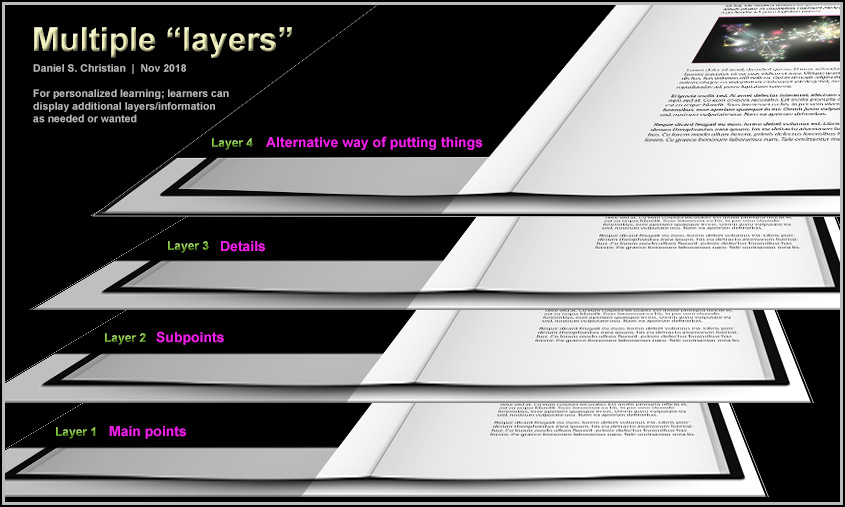
This approach could be helpful at all kinds of learning levels. For example, it could be very helpful for law school students to obtain outlines for cases or for chapters of information. Similarly, it could be helpful for dental or medical school students to get the main points as well as detailed information.
Also, as Artificial Intelligence (AI) grows, the system could check a learner’s cloud-based learner profile to see their reading level or prior knowledge, any IEP’s on file, their learning preferences (audio, video, animations, etc.), etc. to further provide a personalized/customized learning experience.
To recap:
- “Textbooks” continue to be created by teams of specialists, but add specialists with knowledge of students with special needs as well as for gifted students. For example, a team could have experts within the field of Special Education to help create one of the overlays/or filters/lenses — i.e., to reword things. If the text was talking about how to hit a backhand or a forehand, the alternative text layer could be summed up to say that tennis is a sport…and that a sport is something people play. On the other end of the spectrum, the text could dive deeply into the various grips a person could use to hit a forehand or backhand.
- This puts the power of offering differentiation at the point of content creation/development (differentiation could also be provided for at the delivery end, but again, time and expertise are likely not going to be there)
- Publishers create “overlays” or various layers that can be turned on or off by the learners
- Can see whole chapters or can see main ideas, topic sentences, and/or details. Like HTML tags for web pages.
- Can instantly collapse chapters to main ideas/outlines.
Are ‘smart’ classrooms the future? — from campustechnology.com by Julie Johnston
Indiana University explores that question by bringing together tech partners and university leaders to share ideas on how to design classrooms that make better use of faculty and student time.
Excerpt:
To achieve these goals, we are investigating smart solutions that will:
- Untether instructors from the room’s podium, allowing them control from anywhere in the room;
- Streamline the start of class, including biometric login to the room’s technology, behind-the-scenes routing of course content to room displays, control of lights and automatic attendance taking;
- Offer whiteboards that can be captured, routed to different displays in the room and saved for future viewing and editing;
- Provide small-group collaboration displays and the ability to easily route content to and from these displays; and
- Deliver these features through a simple, user-friendly and reliable room/technology interface.
…
Activities included collaborative brainstorming focusing on these questions:
- What else can we do to create the classroom of the future?
- What current technology exists to solve these problems?
- What could be developed that doesn’t yet exist?
- What’s next?
From DSC:
Though many peoples’ — including faculty members’ — eyes gloss over when we start talking about learning spaces and smart classrooms, it’s still an important topic. Personally, I’d rather be learning in an engaging, exciting learning environment that’s outfitted with a variety of tools (physically as well as digitally and virtually-based) that make sense for that community of learners. Also, faculty members have very limited time to get across campus and into the classroom and get things setup…the more things that can be automated in those setup situations the better!
I’ve long posted items re: machine-to-machine communications, voice recognition/voice-enabled interfaces, artificial intelligence, bots, algorithms, a variety of vendors and their products including Amazon’s Alexa / Apple’s Siri / Microsoft’s Cortana / and Google’s Home or Google Assistant, learning spaces, and smart classrooms, as I do think those things are components of our future learning ecosystems.
From DSC:
Ever notice how effective Ted Talks begin? They seek to instantly grab your attention with a zinger question, a somewhat shocking statement, an interesting story, a joke, an important problem or an issue, a personal anecdote or experience, a powerful image/photo/graphic, a brief demonstration, and the like.
Grabbing someone’s attention is a key first step in getting a piece of information into someone’s short-term memory — what I call getting through “the gate.” If we can’t get through the gate into someone’s short-term memory, we have zero (0) chance of having them actually process that information and to think about and engage with that piece of content. If we can’t make it into someone’s short-term memory, we can’t get that piece of information into their long-term memory for later retrieval/recall. There won’t be any return on investment (ROI) in that case.
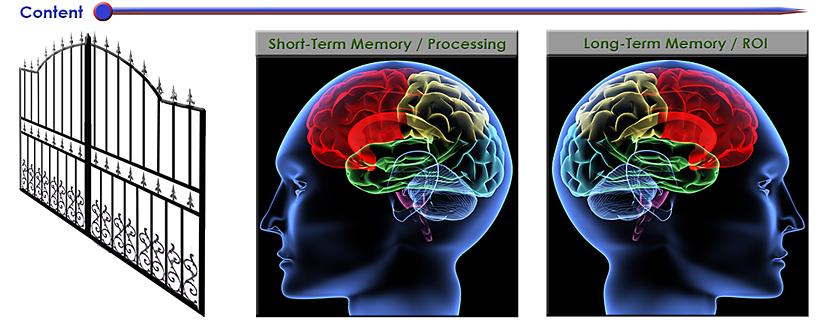
So why not try starting up one of your classes this week with a zinger question, a powerful image/photo/video, or a story from your own work experience? I’ll bet you’ll grab your students’ attentions instantly! Then you can move on into the material for a greater ROI. From there, offering frequent, low-stakes quizzes will hopefully help your students slow down their forgetting curves and help them practice recalling/retrieving that information. By the way, that’s why stories are quite powerful. We often remember them better. So if you can weave an illustrative story into your next class, your students might really benefit from it come final test time!
Also relevant/see:
Ready, set, speak: 5 strong ways to start your next presentation — from abovethelaw.com by Olga Mack, with thanks to Mr. Otto Stockmeyer for this resource
No matter which of these five ways you decide to launch your presentation, ensure that you make it count, and make it memorable.
Excerpts:
- Tell a captivating story
- Ask thought-provoking questions to the audience
- State a shocking headline or statistic
- Use a powerful quote
- Use silence
When delivering a speech, a pause of about three or even as many as 10 seconds will allow your audience to sit and quiet down. Because most people always expect the speaker to start immediately, this silence will thus catch the attention of the audience. They will be instinctively more interested in what you had to say, and why you took your time to say it. This time will also help you gather your nerves and prepare to speak.
100 things students can create to demonstrate what they know — from teachthought.com
Excerpt:
[Here] is a diverse list adapted from resources found at fortheteachers.org of potential student products or activities learners can use to demonstrate their mastery of lesson content. The list also offers several digital tools for students to consider using in a technology-enriched learning environment.
What is a learning ecosystem? And how does it support corporate strategy? — from ej4.com by Ryan Eudy
Excerpt:
A learning ecosystem is a system of people, content, technology, culture, and strategy, existing both within and outside of an organization, all of which has an impact on both the formal and informal learning that goes on in that organization.
The word “ecosystem” is worth paying attention to here. It’s not just there to make the term sound fancy or scientific. A learning ecosystem is the L&D equivalent of an ecosystem out in the wild. Just as a living ecosystem has many interacting species, environments, and the complex relationships among them, a learning ecosystem has many people and pieces of content, in different roles and learning contexts, and complex relationships.
Just like a living ecosystem, a learning ecosystem can be healthy or sick, nurtured or threatened, self-sustaining or endangered. Achieving your development goals, then, requires an organization to be aware of its own ecosystem, including its parts and the internal and external forces that shape them.
From DSC:
Yes, to me, the concept/idea of a learning ecosystem IS important. Very important. So much so, I named this blog after it.
Each of us as individuals have a learning ecosystem, whether we officially recognize it or not. So do the organizations that we work for. And, like an ecosystem out in nature, a learning ecosystem is constantly morphing, constantly changing.
We each have people in our lives that help us learn and grow, and the people that were in our learning ecosystems 10 years ago may or may not still be in our current learning ecosystems. Many of us use technologies and tools to help us learn and grow. Then there are the spaces where we learn — both physical and virtual spaces. Then there are the processes and procedures we follow, formally and/or informally. Any content that helps us learn and grow is a part of that ecosystem. Where we get that content can change, but obtaining up-to-date content is a part of our learning ecosystems. I really appreciate streams of content in this regard — and tapping into blogs/websites, especially via RSS feeds and Feedly (an RSS aggregator that took off when Google Reader left the scene).
The article brings up a good point when it states that a learning ecosystem can be “healthy or sick, nurtured or threatened, self-sustaining or endangered.” That’s why I urge folks to be intentional about maintaining and, better yet, consistently enhancing their learning ecosystems. In this day and age where lifelong learning is now a requirement to remain in the workforce, each of us needs to be intentional in this regard.









